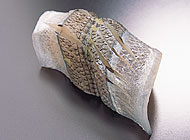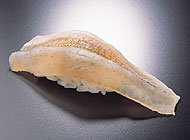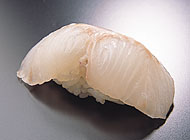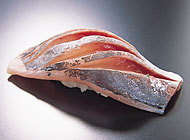Special Feature![]() Sushi! Sushi! Sushi!
Sushi! Sushi! Sushi!
Sushi in Season
The seas around Japan offer a rich array of seafood to highlight every season. As the seasons change, so does the choice of sushi.
Photos: Ito Chiharu Collaboration: Kizushi
Spring
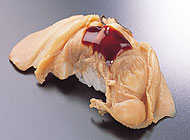
Hard clam
(hama-guri)
Parboiled, then marinated with a seasoning using the broth the clams were boiled in. Chewy and juicy.

Japanese egg cockle (tori-gai)
Dark purple ones with a sheen are best for this type of sushi, offering a tender texture and a unique sweetness.
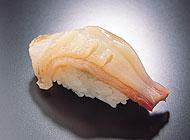
Trough shell
(miru-gai)
Has the best chewy texture of all shellfish. A luxury item, partly because so few are available.
Summer
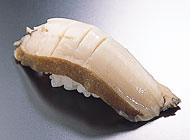
Abalone (awabi)
There are different ways to prepare abalone, depending on the variety: raw, steamed or simmered. Whatever the preparation method, it always provides a satisfying fragrance of the sea.
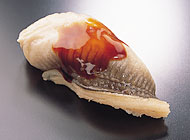
Common Japanese conger (anago)
Becomes very tender after simmering. Conger taken from Tokyo Bay is said to be the best.
